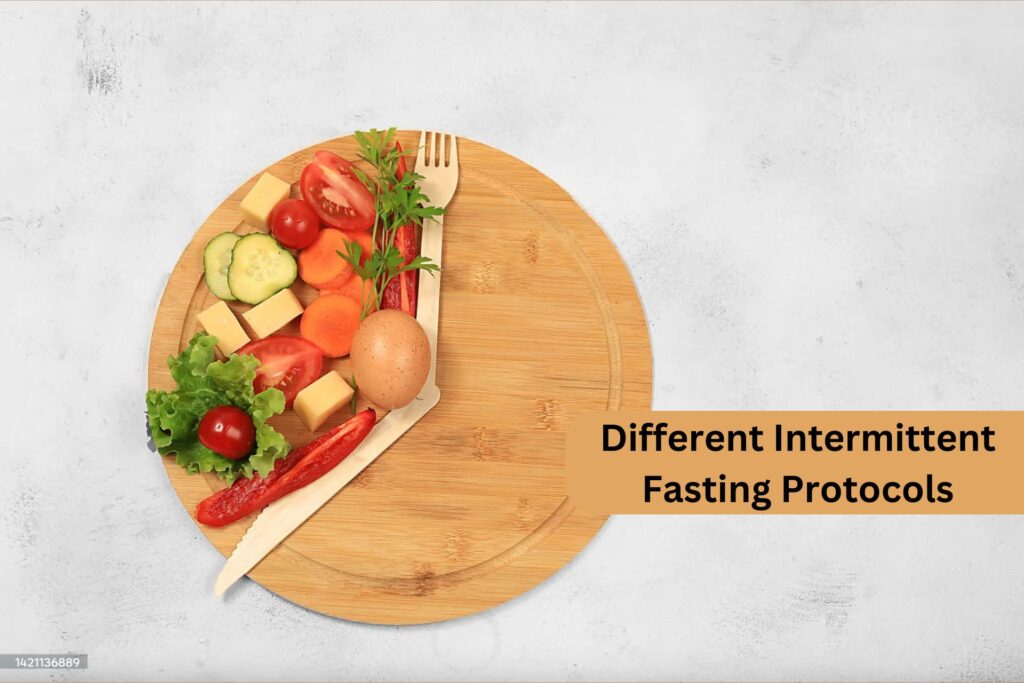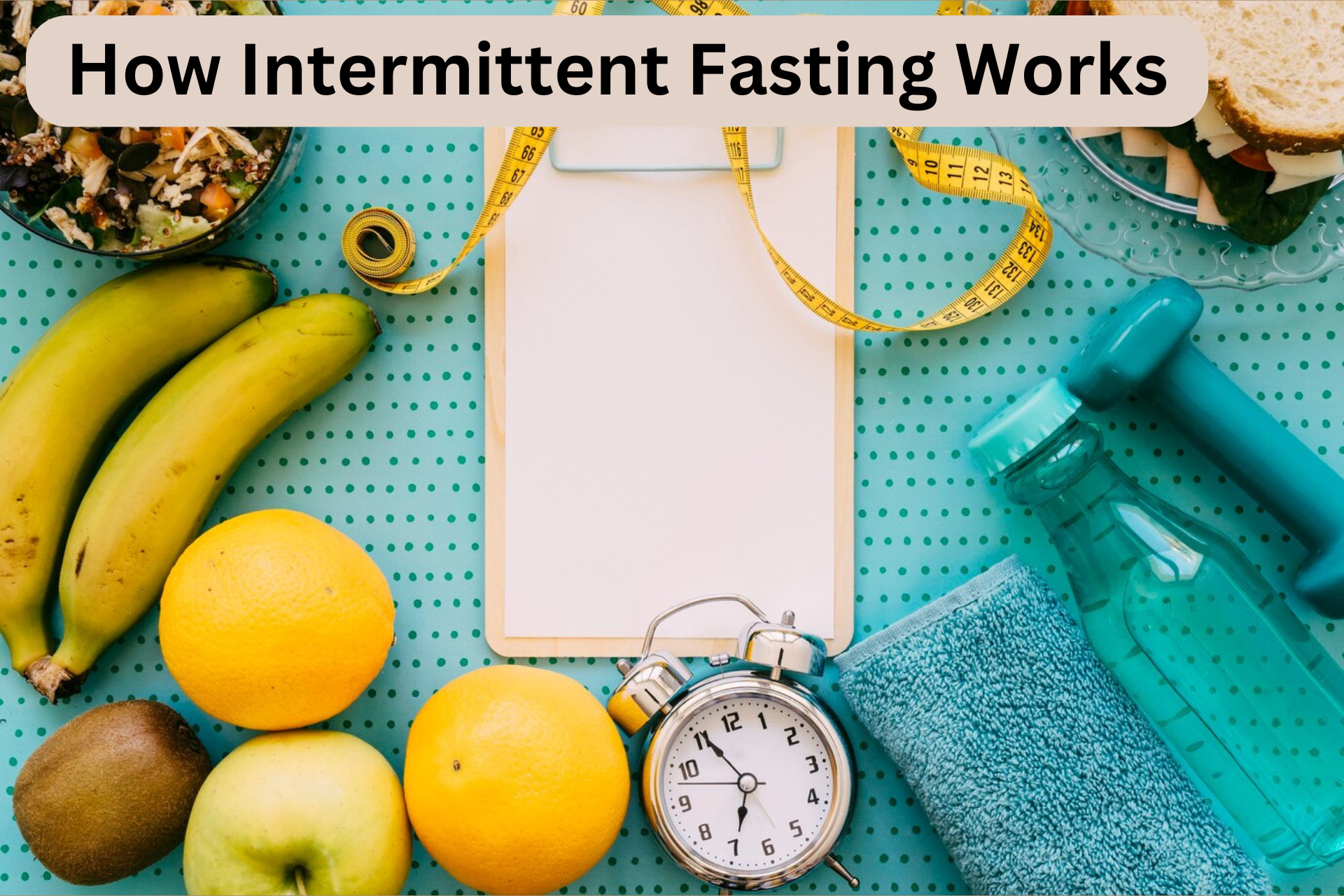Are you tired of diets that leave you hungry and unsatisfied? Discover how intermittent fasting works and revolutionize your approach to health and weight loss.
Imagine a lifestyle that not only helps you shed pounds but also boosts your energy and mental clarity.
Sounds too good to be true? It’s not.
| Key Takeaway | Description |
|---|---|
| 🕰️ Timing is Everything | IF focuses on when you eat, not what you eat |
| 🔄 Metabolic Switch | After 12 hours, your body shifts from burning glucose to fat |
| 🧬 Cellular Magic | Fasting triggers cellular repair and increases HGH production |
| 🧠 Beyond Weight Loss | IF may improve brain health and increase longevity |
| 🚀 Start Simple | Begin with a 12-hour overnight fast and gradually extend |
In this post, we’ll reveal the science behind intermittent fasting, its incredible benefits, and how you can easily incorporate it into your daily routine.
What is Intermittent Fasting?
Intermittent fasting isn’t about what you eat, but when you eat. It’s a pattern where you switch between eating and fasting periods. There are different ways to do it, but the most common are:
- 16/8: Fast for 16 hours, eat within an 8-hour window
- 5:2: Eat normally for 5 days, restrict calories (500-600) for 2 days
- Eat-Stop-Eat: Do a 24-hour fast once or twice a week
How Does Intermittent Fasting Work?
Now, let’s get into the nitty-gritty of how this actually works in your body.
1. The Fasting State
When you fast, your body goes through some pretty cool changes:
- Insulin levels drop: This makes stored body fat more accessible
- Human Growth Hormone (HGH) increases: This helps with fat loss and muscle gain
- Cellular repair kicks in: Your body starts cleaning out damaged cells
2. The Metabolic Switch
After about 12 hours of fasting, something amazing happens. Your body switches from using glucose for energy to burning fat. This is called ketosis.
3. Calorie Restriction
Let’s face it – when you have less time to eat, you often end up eating less. This can lead to weight loss over time.
The Benefits of Intermittent Fasting
Intermittent fasting isn’t just about weight loss. Here are some other potential benefits:
- Improved insulin sensitivity
- Better brain health
- Increased longevity
- Reduced inflammation
How to Start Intermittent Fasting
Ready to give it a try? Here’s a simple way to start:
- Choose your fasting window: Start with a 12-hour fast overnight
- Gradually increase: Slowly extend your fasting window to 14, then 16 hours
- Stay hydrated: Drink plenty of water during your fast
- Break your fast wisely: Start with a light meal to ease digestion
My Personal Experience
When I first tried intermittent fasting, I was skeptical. But after a few weeks, I noticed:
- More energy throughout the day
- Better focus at work
- Gradual weight loss without feeling deprived
It wasn’t always easy, but the results were worth it!
Exploring Different Intermittent Fasting Protocols

Intermittent fasting isn’t a one-size-fits-all approach. There are various intermittent fasting methods, each with its unique pattern of timing and fasting periods. Let’s dive into some popular intermittent fasting protocols that might suit your lifestyle.
Common Intermittent Fasting Methods
Here’s a quick comparison of the different intermittent fasting methods:
| Method | Fasting Period | Eating Window | Frequency | Best For |
|---|---|---|---|---|
| 16/8 (Time-Restricted Eating) | 16 hours daily | 8 hours daily | Daily | Beginners seeking a sustainable routine |
| 14/10 | 14 hours daily | 10 hours daily | Daily | Those easing into fasting |
| 12/12 | 12 hours daily | 12 hours daily | Daily | Individuals new to fasting |
| 5:2 Diet | Reduced calories 2 days/week | Normal eating 5 days/week | Weekly (2 nonconsecutive days) | Flexible schedule with non-fasting days |
| Alternate-Day Fasting | Fast every other day | Normal eating on non-fasting day | Every other day | Experienced fasters seeking significant results |
| Eat-Stop-Eat | 24-hour fasts | Normal eating on other days | Once or twice a week | Those looking for periodic extended fasts |
Time-Restricted Eating (TRE)
Also known as time-restricted fasting, this method involves daily fasting for a set number of hours and eating during the remaining time window.
- 16/8 Method: Fast for 16 hours, eat within an 8-hour eating window.
- 14/10 Method: Fast for 14 hours, eat within a 10-hour window.
- 12/12 Method: Fast for 12 hours, eat within a 12-hour fasting window.
Benefits:
- Aligns with your natural sleep/wake cycle.
- Simplifies your eating schedule.
- May improve metabolic health over the long run.
The 5:2 Diet
On this intermittent fasting plan, you eat normally for five days and restrict calories to 500-600 on two nonconsecutive days.
Benefits:
- Flexibility with intermittent versus continuous calorie restriction.
- Easier to maintain over time compared to daily fasting.
Alternate-Day Fasting (ADF)
With alternate-day fasting, you alternate between fast days and non-fasting days.
- Fast days: Consume 500 calories or fully fast.
- Non-fasting days: Eat as usual.
Benefits:
- Significant calorie reduction.
- May enhance fat burning during fasted states.
Eat-Stop-Eat
This involves doing one or two 24-hour fasts per week.
Benefits:
- Simple structure with extended fasting periods.
- Can promote deep cellular repair during the extended fasted state.
Incorporating Exercise into Your Intermittent Fasting Schedule
Adding exercising to your intermittent fasting program can amplify the benefits, but it’s important to consider timing.
Working Out in a Fasted State
Exercising during fasting can:
- Increase fat utilization as energy due to low insulin levels.
- Potentially enhance endurance over several hours.
Tips:
- Opt for light exercise like walking or yoga during prolonged fasts.
- Stay hydrated and listen to your body.
- Be cautious with high-intensity workouts in a fasted state.
Timing Your Workouts
To maximize performance and recovery:
- Schedule intense workouts during your eating windows.
- Ensure you consume adequate nutrients post-exercise within your time window.
Advanced Fasting Practices
Once you’re comfortable with basic intermittent fasting, you might explore more advanced fasting methods.
Extended Fasts
Fasting for periods longer than 24 hours, such as:
- 36-hour fasts or 48-hour fasts.
- Should be approached cautiously and not done frequently.
- May enhance cellular repair processes due to prolonged fasted state.
Intermediate Fasting
An intermediate step between basic and extended fasting:
- 20/4 Method: Fast for 20 hours, eat within a 4-hour window.
- Involves greater time restriction and may suit those seeking accelerated results.
Tips for a Successful Intermittent Fasting Plan
Starting an intermittent fasting pattern can be challenging. Here are some effective ways to make it work:
Gradual Adjustment
- Begin with a 12-hour fasting window and gradually increase the duration.
- Allows your body to adapt to longer fasting periods without feeling extreme over time.
Stay Hydrated
- Drink plenty of water, herbal teas, or black coffee during fasting hours.
- Helps manage hunger and supports overall health.
Mindful Eating
- Focus on nutrient-rich foods during eating periods.
- Include proteins, healthy fats, and fiber to stay satiated.
- Avoid overeating during your eight-hour window.
Manage Distractions
- Engage in activities to keep your mind off hunger.
- Use this time for hobbies, work, or light workouts.
- Reduces the temptation to break your fast due to boredom or cravings.
For More Tips, Check this out!
Addressing Common Concerns
Skipping Breakfast
- Skipping breakfast is common in methods like the 16/8.
- If mornings are busy, it might be an effective way to extend your fasting period.
Hunger Pangs
- Initial hunger is natural but often subsides.
- Drinking water or engaging in distractions can help.
- Remember that hunger comes in waves and usually passes after several hours.
Social Situations
- Plan your fasting schedule around social events.
- Flexibility is key; it’s okay to adjust your intermittent fasting schedule occasionally.
Long-Term Considerations
Intermittent fasting is more than a diet; it’s a lifestyle change involving alternating cycles of eating and going without food.
Sustainability
- Choose a method that fits your daily routine and commitments.
- Consistency over time leads to better results.
Health Monitoring
- Keep track of your energy levels, mood, and overall well-being.
- Consult with a healthcare professional before starting, especially if you have underlying health conditions.
By exploring these different intermittent fasting methods, you can find a routine that aligns with your lifestyle. Whether you prefer a time-restricted eating approach like the 16/8 method or the flexibility of the 5:2 diet, the key is to create a sustainable cycle of fasting and eating periods. Remember, intermittent fasting is not just about weight loss but fostering a healthier relationship with food and your body’s natural rhythms.
Wrapping Up
Intermittent fasting isn’t a magic bullet, but it can be a powerful tool for health and weight management. It works by tapping into your body’s natural processes and can lead to a range of benefits.
Remember, the best diet is one you can stick to. If intermittent fasting feels right for you, give it a try. You might just become a believer like me!
Have you tried intermittent fasting? What was your experience? Share in the comments below!
Top 5 FAQs on How Intermittent Fasting Works
Intermittent fasting (IF) is an eating pattern that cycles between periods of fasting and eating. It does not prescribe specific foods but rather focuses on when to eat.
Intermittent fasting helps reduce calorie intake and increases metabolic rate, which can lead to weight loss. During fasting, insulin levels drop, facilitating fat burning.
Common methods include:
- 16/8 Method: Fasting for 16 hours and eating during an 8-hour window.
- 5:2 Diet: Eating normally for five days and restricting calories on two non-consecutive days.
- Alternate-Day Fasting: Alternating between fasting days and regular eating days.
Yes, intermittent fasting can enhance metabolic health by improving insulin sensitivity and increasing levels of human growth hormone (HGH), which aids in fat loss and muscle gain.
While many people can safely practice intermittent fasting, it may not be suitable for everyone. Individuals with certain health conditions or those who are pregnant should consult a healthcare professional before starting any fasting regimen.

